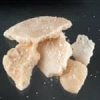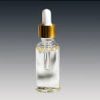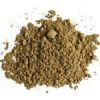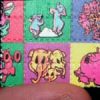Heroin Information, Brief Description
Heroin is a semi-synthetic opioid. It has a high potential for addiction. It comes from the resin of the seed pod of the opium poppy plant, first as morphine and then processed into heroin.
Street Names for Heroin: Smack, H, Ska, Junk, and many others.
Heroin’s Effects
Short-term effects include a surge of euphoria followed by alternately wakeful and drowsy states and cloudy mental functioning. Associated with fatal overdose and, particularly for those who inject the drug; infectious diseases such as HIV/AIDS and hepatitis. Long-term users may develop collapsed veins, liver disease, and lung complications.
Information on its Appearance
Pure heroin is a white powder with a bitter taste. On the street, the colour and consistency vary. Street heroin ranges from a fine white or brown powder, sometimes grainy, to a dark brown sticky gum called “black tar heroin.” Colour variations come from additives or impurities left from the manufacturing process.Heroin Information on Overdose
Most street heroin is “cut” with other drugs or substances like sugar, starch, or powdered milk to increase the weight for retail sales. It can also contain potent fentanyl and other drugs to enhance the effects. There have been many overdoses because of this fact alone.
Because heroin users do not know the actual strength of the drug or its true contents, they are at risk of overdose or death. Heroin also poses special problems because of the transmission of HIV and other diseases that can occur from sharing needles.
How Is Heroin Consumed?
Heroin is usually injected, sniffed/snorted, or smoked. Typically, a heroin abuser may inject up to four times a day. Intravenous injection provides the greatest intensity and most rapid onset of euphoria (7 to 8 seconds).
While intramuscular injection produces a relatively slow onset of euphoria (5 to 8 minutes). When heroin is sniffed or smoked, peak effects are usually felt within 10 to 15 minutes.
Although smoking and sniffing heroin do not produce a “rush” as quickly or as intensely as intravenous injection. All three forms of heroin administration are addictive.
With the shift in heroin abuse patterns comes an even more diverse group of users. Older users (over 30) continue to be one of the largest user groups in most national data.
However, an increase in new, young users across the country who are being lured by inexpensive, high-purity heroin that can be sniffed or smoked instead of injected. Heroin has also been appearing in more affluent communities.
Heroin Information – Short-Term Effects
Soon after injection (or inhalation), heroin crosses the blood-brain barrier. In the brain, heroin is converted to morphine and binds rapidly to opioid receptors.
Abusers typically report feeling a surge of pleasurable sensation, a “rush.” The intensity of the rush is a function of how much drug is taken and how rapidly the drug enters the brain and binds to the natural opioid receptors.
Heroin is particularly addictive because it enters the brain so rapidly. With heroin, the rush is usually accompanied by a warm flushing of the skin, dry mouth, and a heavy feeling in the extremities, which may be accompanied by nausea, vomiting, and severe itching.
After the initial effects, abusers usually will be drowsy for several hours. Mental function is clouded by heroin’s effect on the central nervous system. Cardiac function slows. Breathing is also severely slowed, sometimes to the point of death.
Heroin overdose is a particular risk on the street, where the amount and purity of the drug cannot be accurately known.
List of Drugs
REVIEWS

Marc J. Bernard
Author,
Substance Use Disorder & Recovery Professional,
Referral & Consultation Counsellor



















